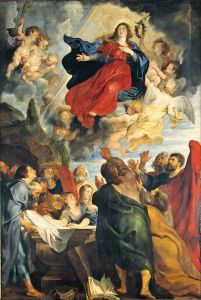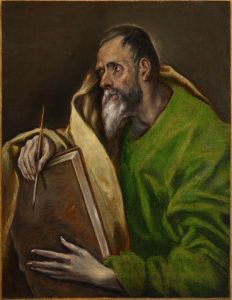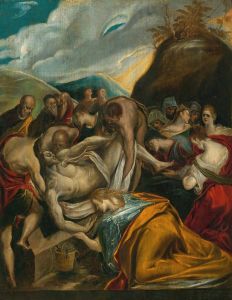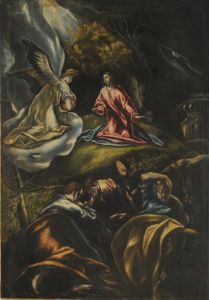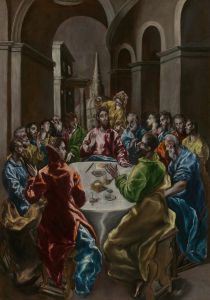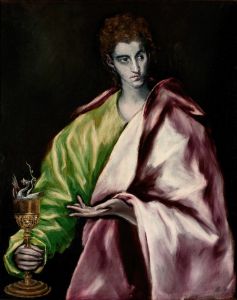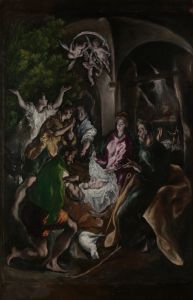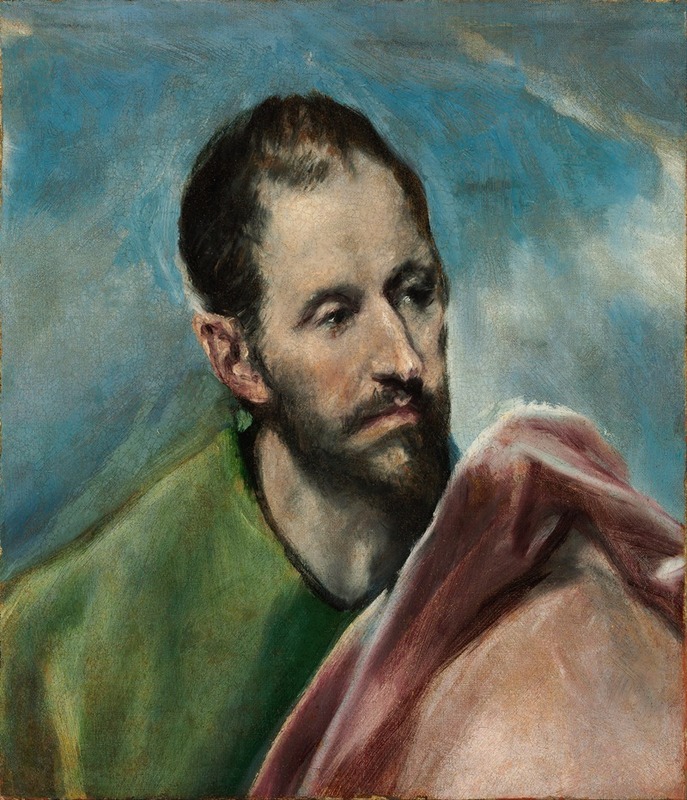
Saint James The Younger
A hand-painted replica of El Greco (Domenikos Theotokopoulos)’s masterpiece Saint James The Younger, meticulously crafted by professional artists to capture the true essence of the original. Each piece is created with museum-quality canvas and rare mineral pigments, carefully painted by experienced artists with delicate brushstrokes and rich, layered colors to perfectly recreate the texture of the original artwork. Unlike machine-printed reproductions, this hand-painted version brings the painting to life, infused with the artist’s emotions and skill in every stroke. Whether for personal collection or home decoration, it instantly elevates the artistic atmosphere of any space.
Saint James the Younger is a painting by the renowned artist El Greco, whose real name was Domenikos Theotokopoulos. This artwork is part of a series of paintings depicting Christ's apostles, created by El Greco during his time in Spain. El Greco, originally from Crete, was a prominent painter, sculptor, and architect of the Spanish Renaissance, known for his distinctive style that combined elements of Byzantine and Western painting traditions.
The painting of Saint James the Younger is believed to have been completed between 1608 and 1614, during El Greco's mature period. This series of apostle paintings was likely intended for the Church of the Hospital of Tavera in Toledo, Spain, where El Greco spent much of his later life. The series is notable for its intense emotional expression and elongated figures, which are characteristic of El Greco's work.
In this painting, Saint James the Younger is depicted as a solemn and contemplative figure. El Greco's use of color is particularly striking, with a rich palette that includes deep blues, reds, and earthy tones. The apostle is shown with a long, narrow face and expressive eyes, typical of El Greco's style. The background is relatively simple, which serves to emphasize the figure of Saint James himself.
El Greco's portrayal of Saint James the Younger is not only a religious representation but also an exploration of human emotion and spirituality. The artist's unique approach to form and color creates a sense of otherworldliness, inviting viewers to reflect on the spiritual significance of the apostle. This painting, like others in the series, demonstrates El Greco's ability to convey complex theological themes through his art.
The identity of Saint James the Younger is often a subject of discussion among scholars. He is sometimes identified with James, son of Alphaeus, one of the Twelve Apostles of Jesus. However, historical records about him are limited, and he is often distinguished from James, son of Zebedee, another apostle. Despite the ambiguity surrounding his identity, El Greco's painting captures the reverence and importance attributed to him within the Christian tradition.
El Greco's work, including Saint James the Younger, had a significant impact on the development of art in Spain and beyond. His distinctive style influenced later artists, particularly during the Expressionist and Cubist movements of the 20th century. The emotional intensity and spiritual depth of his paintings continue to resonate with audiences today.
The painting of Saint James the Younger is housed in the Museo del Prado in Madrid, which holds one of the most comprehensive collections of El Greco's works. The museum provides an opportunity for visitors to appreciate the artist's contribution to the history of art and his unique interpretation of religious subjects.
In summary, Saint James the Younger by El Greco is a masterful representation of one of Christ's apostles, showcasing the artist's unique style and profound spiritual insight. Through his use of color, form, and expression, El Greco invites viewers to engage with the deeper meanings of faith and devotion, making this painting a significant work in the canon of religious art.






